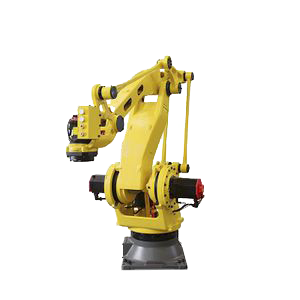What is a Four-Axis Robot?

Industrial robots come in a variety of shapes, sizes, and configurations. One of the aspects they can vary on is the number of axes they have. An axis determines a robot’s degree of freedom. Each axis provides a robot with an independent motion. The more axes a robot has the more range of motion it will have for operation. Axes correlate directly with the number of motors located in a robot. However, since these are often embedded inside the robot, they are not readily visible, but this information is often listed as one of the main specifications pertaining to a robot.
Six-axis robots gain most of the attention in the manufacturing world, but four-axis robots are also widely used for industrial applications. Types of four-axis robots include SCARA, delta, and articulated robots. Four-axis robots will have four motors, with the fourth motor located in the robot wrist to allow for EOAT rotation while being able to travel along the x, y, and z axes. The movements of each axis of a standard four-axis robot are defined as:
- • Axis One - Axis one is the base axis of a robot. This axis provides a robot the ability to move from left to right from its center for a complete 180 degrees of motion. Axis one controls a robot’s ability to move an object along a straight line.
- • Axis Two - Axis two allows a robotic manipulator to move forwards and backwards. In a standard robot configuration, it controls the lower arm of the robot. With this axis, robots can lift objects, move objects to the side, move them up and down, or place them along the x or y axes.
- • Axis Three - Axis three provides robots the ability to move along all three x, y, and z axes. The third axis of standard robots controls the upper arm allowing for an expanded vertical reach, making parts more accessible.
- • Axis Four - Axis four is located in the robot wrist to control the movement of a robot’s end-effector. This axis allows robots to change the orientation of an object through a rolling motion. In other words, the robot wrist is able to rotate parts.
Four-Axis Robot Applications
Robotic applications for four-axis robots will vary depending upon the type of robot. Four-axis SCARA robots are mostly used for robotic assembly applications but can also be deployed for light palletizing and machine loading. Four-axis delta robots may be used for assembly, robotic pick and place, and automated packaging applications.Articulated four-axis robots provide unparalleled stability and strength, making them ideal for robotic palletizing and automated material handling applications. Many four-axis articulated robots are designed with reinforcement bars above and below their arm. These bars provide extra stability, keeping robots sturdy when palletizing boxes, concrete slabs, bags, and other items. FANUC has dedicated an entire robot series to palletizing processes. This line features four-axis workhorses, including the M-410ib/160 and the M410ic/500. These FANUC palletizing robots are able to automated most palletizing and depalletizing applications.
Having fewer axes means four-axis robots have a simple design that makes them perfect for heavy lifting applications. In addition, their simplified configuration allows for easy operation and fast speeds, enhancing productivity while reducing cycle times.
Robots Done Right is the place to start when it comes to used robots. Contact us if you are interested in buying or selling your used robot.